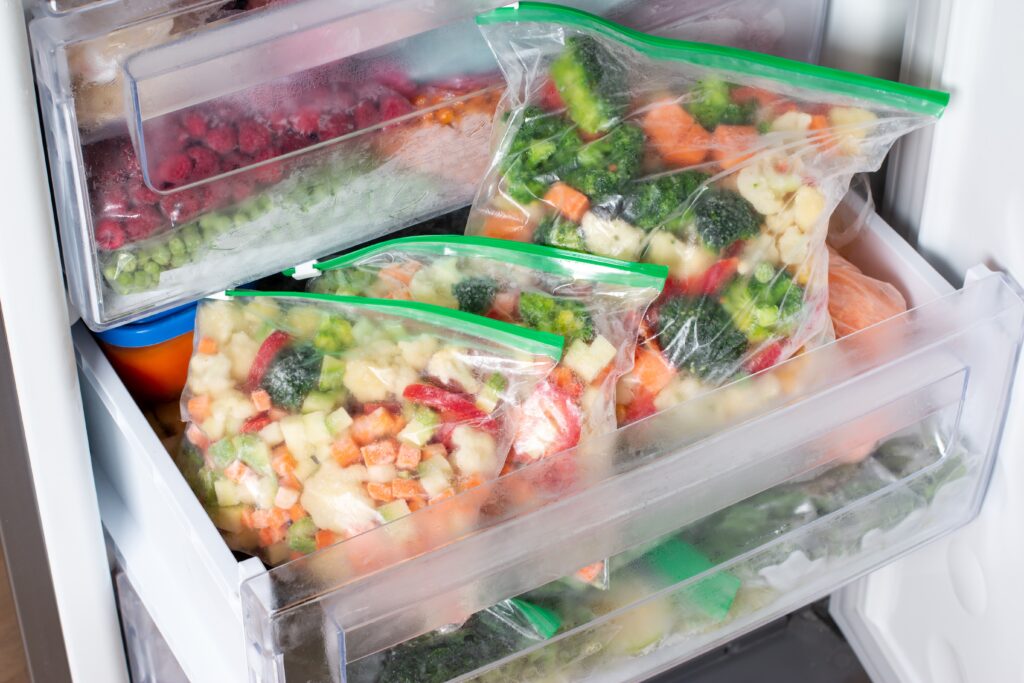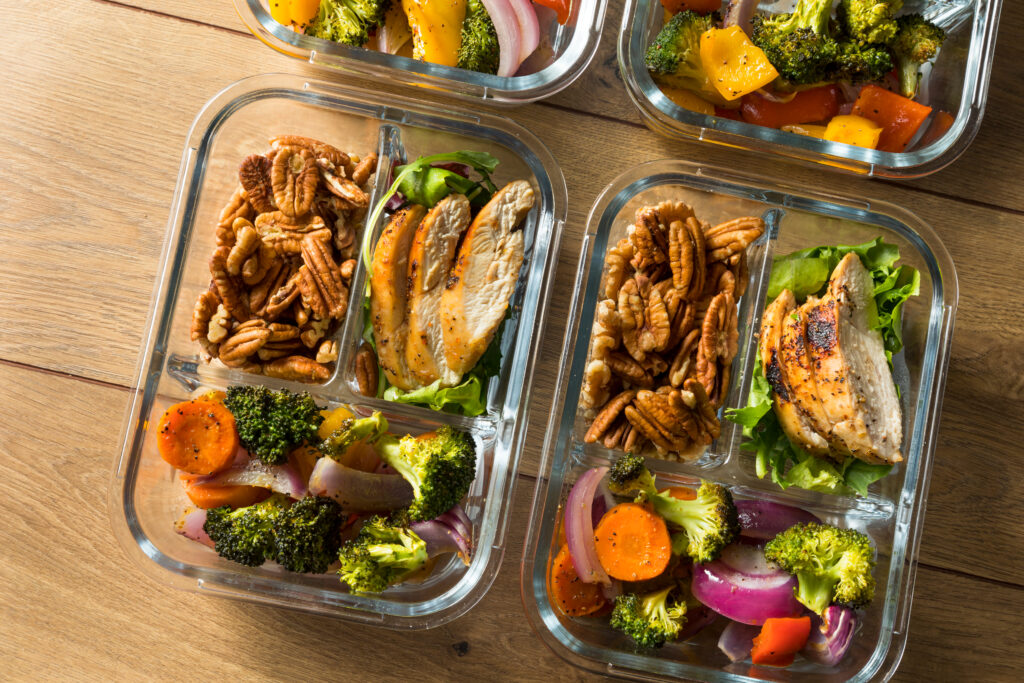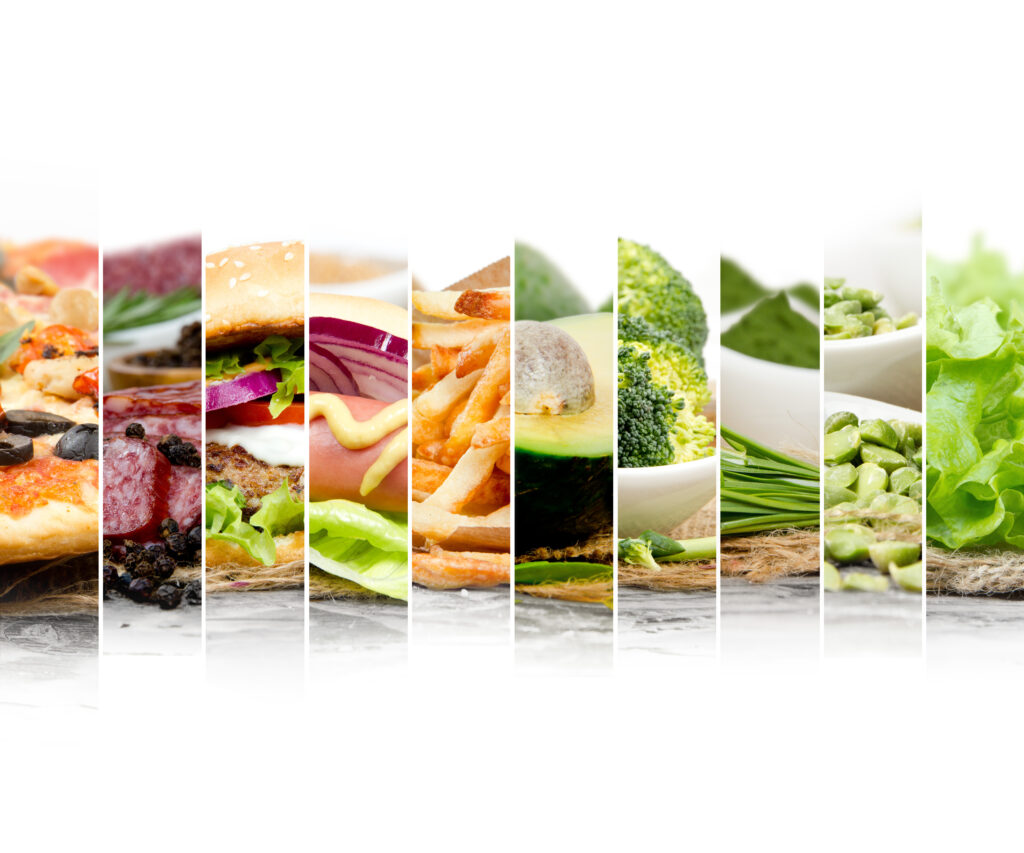Healthy eating is often touted as an expensive endeavor, with the perception that nutritious foods like fresh produce, lean proteins, and whole grains come at a premium. However, the reality is that with some smart planning and strategic shopping, it’s entirely possible to eat well while sticking to a tight budget. In this comprehensive guide, we’ll explore a wealth of practical tips and tactics that can help you maximize your food dollars and enjoy a balanced, wholesome diet without sacrificing your financial well-being.
Plan Meals and Make a Grocery List
Meal Planning for Savings
One of the most effective ways to eat healthy on a budget is to plan your meals in advance. By taking the time to map out your weekly menu, you can not only ensure that you’re consuming a nutritious and well-rounded diet, but also avoid the temptation of impulse purchases or last-minute takeout orders that can quickly derail your budget.
When planning your meals, consider incorporating versatile ingredients that can be used in multiple dishes. For example, a roasted chicken can be repurposed into a variety of meals, such as chicken salad sandwiches, chicken and vegetable stir-fries, or chicken noodle soup. By making the most of your ingredients, you can stretch your food budget further and reduce food waste.
The Power of the Grocery List
Creating a detailed grocery list before heading to the store is another crucial step in eating healthy on a budget. By taking inventory of what you already have in your pantry and refrigerator, you can avoid buying duplicates or items you may not need. Additionally, sticking to your list can help you resist the temptation of impulse purchases, which can quickly add up and blow your budget.
To make your grocery list even more effective, consider using a digital app or tool that allows you to share and collaborate with other members of your household. This can help ensure that everyone is on the same page and reduce the chances of forgetting important items.
Embrace Frozen and Canned Produce

The Nutritional Benefits of Frozen Foods
While fresh fruits and vegetables are often touted as the healthiest options, frozen produce can be just as nutritious and often more cost-effective. When produce is frozen at the peak of ripeness, it can retain its essential vitamins, minerals, and antioxidants, making it a convenient and budget-friendly alternative to fresh items.
Frozen fruits and vegetables are also less prone to spoilage, which can help reduce food waste and save you money in the long run. By stocking up on frozen produce, you can have a steady supply of nutrient-dense ingredients on hand for your meals, without worrying about them going bad before you have a chance to use them.
The Benefits of Canned Goods
Canned goods, such as beans, lentils, and tomatoes, can also be a valuable addition to your healthy eating arsenal. These shelf-stable items are often less expensive than their fresh counterparts and can be easily incorporated into a wide range of recipes.
When selecting canned goods, be sure to look for options that are low in added sodium and sugar. Opt for items packed in water or their own juices rather than heavy syrups or oils. By making smart choices in the canned food aisle, you can enjoy the convenience and cost-savings of these versatile ingredients without compromising on nutrition.
Embrace Budget-Friendly Protein Sources
The Versatility of Beans and Lentils
Protein is an essential macronutrient for maintaining a balanced and healthy diet, but it can often be one of the more expensive components of a meal. To keep your protein costs in check, consider incorporating more plant-based sources, such as beans and lentils, into your meals.
Beans and lentils are not only affordable, but they are also packed with fiber, complex carbohydrates, and a range of essential vitamins and minerals. These versatile ingredients can be used in a variety of dishes, from hearty soups and stews to flavorful curries and chilis. By making beans and lentils a staple in your meal planning, you can enjoy the nutritional benefits of protein-rich foods without breaking the bank.
Exploring Affordable Cuts of Meat
While plant-based proteins can be a great way to save money, there’s no denying the appeal of a juicy steak or a flavorful chicken dish. To enjoy meat without straining your budget, consider exploring less expensive cuts of meat, such as chicken thighs, pork shoulder, or ground turkey.
These cuts may require a bit more preparation or cooking time, but they can be just as delicious and nutritious as their more expensive counterparts. By getting creative with marinades, slow-cooking methods, and flavorful seasonings, you can transform these budget-friendly meats into mouthwatering meals that satisfy your cravings without draining your wallet.
Shop Smart at the Grocery Store

Embrace Generic and Store Brands
One of the easiest ways to save money on your grocery bill is to opt for generic or store-brand products. These items are often just as high in quality as their name-brand counterparts, but they typically come with a significantly lower price tag.
When shopping, take the time to compare the ingredients and nutritional information between the generic and name-brand options. You may be surprised to find that the store-brand version is virtually indistinguishable from the more expensive alternative, allowing you to enjoy the same level of quality at a fraction of the cost.
Leverage Coupons and Cashback Apps
In addition to embracing generic brands, you can also save money on your grocery purchases by taking advantage of coupons and cashback apps. These tools can help you identify and capitalize on discounts and promotions, allowing you to stretch your food budget even further.
Be sure to regularly check for coupons in your local newspaper, online, or through your grocery store’s loyalty program. Additionally, consider downloading cashback apps like Ibotta or Fetch Rewards, which can provide you with rebates and rewards for your purchases.
Grow Your Own Produce
The Joy of Homegrown Herbs and Vegetables
If you have the space and the inclination, growing your own produce can be an excellent way to save money on your grocery bills while enjoying the freshest and most flavorful ingredients. Even if you have a small balcony or a sunny windowsill, you can cultivate a variety of herbs, leafy greens, and even some vegetables that can supplement your meals.
Not only is homegrown produce often more affordable than store-bought options, but it also allows you to have complete control over the growing process, ensuring that your fruits and vegetables are free from harmful pesticides and additives. Plus, the act of gardening can be a rewarding and therapeutic experience that can further enhance your healthy eating journey.
Maximize Your Harvests
To get the most out of your homegrown produce, consider implementing strategies to extend your harvests and minimize waste. This can include techniques like succession planting, where you sow new seeds at staggered intervals to ensure a continuous supply of fresh ingredients. You can also explore methods for preserving your bounty, such as canning, freezing, or drying, so that you can enjoy the fruits of your labor long after the growing season has ended.
Embrace Meal Prepping and Leftovers

The Benefits of Meal Prepping
Meal prepping is a powerful tool in the arsenal of anyone looking to eat healthy on a budget. By dedicating a few hours each week to preparing and portioning out your meals, you can not only save time during the busy workweek but also ensure that you have a steady supply of nutritious, home-cooked meals at the ready.
When meal prepping, focus on recipes that can be easily scaled up or repurposed into multiple dishes. Soups, stews, and casseroles are excellent choices, as they can often be frozen and reheated with ease. Additionally, consider preparing components like cooked grains, roasted vegetables, or marinated proteins that can be mixed and matched throughout the week to create a variety of meals.
Repurposing Leftovers
In addition to meal prepping, embracing leftovers can be another effective way to save money and reduce food waste. By repurposing the extra portions from your home-cooked meals, you can enjoy a diverse array of dishes without having to invest additional time and resources into preparing new meals.
Get creative with your leftovers by incorporating them into salads, omelets, or sandwiches. You can also transform them into entirely new dishes, such as turning roasted chicken into a flavorful stir-fry or transforming last night’s pasta into a baked casserole.
Shop Seasonally and Locally
The Benefits of Seasonal Produce
One of the keys to eating healthy on a budget is to focus on seasonal and locally-sourced produce. When fruits and vegetables are in season, they are often more abundant and, as a result, more affordable. By aligning your meal planning with the seasonal availability of fresh ingredients, you can enjoy the maximum nutritional value and flavor while minimizing your costs.
To take advantage of seasonal produce, consider visiting your local farmers market or community-supported agriculture (CSA) program. These outlets not only provide you with the freshest and most flavorful ingredients, but they also allow you to support your local economy and reduce the environmental impact of long-distance food transportation.
Explore Farmers Markets and CSAs
Farmers markets and CSAs can be excellent sources of affordable, high-quality produce, as well as other locally-sourced goods like eggs, dairy, and artisanal foods. By cutting out the middleman and purchasing directly from the growers, you can often enjoy significant savings compared to traditional grocery stores.
Many farmers markets and CSAs also accept federal and state food assistance programs, such as the Supplemental Nutrition Assistance Program (SNAP), making them accessible to a wider range of individuals and families. Additionally, some markets may offer matching programs that can further stretch your food dollars.
Optimize Your Grocery Shopping Habits

Avoid Shopping on an Empty Stomach
One of the easiest ways to overspend at the grocery store is to shop while hungry. When your stomach is rumbling, it’s all too easy to succumb to impulse purchases or to load up your cart with unhealthy snacks and convenience foods that may not align with your healthy eating goals.
Before heading to the store, make sure to have a nutritious snack or small meal to curb your appetite. This will help you approach your grocery shopping with a clear mind and a focused approach, allowing you to stick to your list and make more mindful purchasing decisions.
Take Advantage of Unit Pricing
When comparing the costs of different products, it’s important to look beyond the sticker price and consider the unit price. The unit price, which is typically displayed on the shelf tag, allows you to easily compare the cost per ounce, pound, or other standard unit of measurement, making it easier to identify the most cost-effective option.
By focusing on unit pricing, you can avoid being swayed by larger package sizes or bulk deals that may not actually be the best value. This strategy can be particularly useful when shopping for items like grains, nuts, and other bulk goods, where the per-unit cost can vary significantly between brands and package sizes.
Conclusion
Eating healthy on a budget may require a bit more effort and planning, but the rewards are well worth it. By embracing strategies like meal planning, strategic grocery shopping, and the utilization of budget-friendly ingredients, you can enjoy a nutritious and balanced diet without breaking the bank.
Remember, the key to success is to approach healthy eating with a mindful and resourceful mindset. With a little creativity and a willingness to experiment, you can discover a wealth of delicious and affordable meals that will nourish your body and your wallet. So, embark on this journey with confidence, and savor the benefits of eating well while keeping your finances in check.